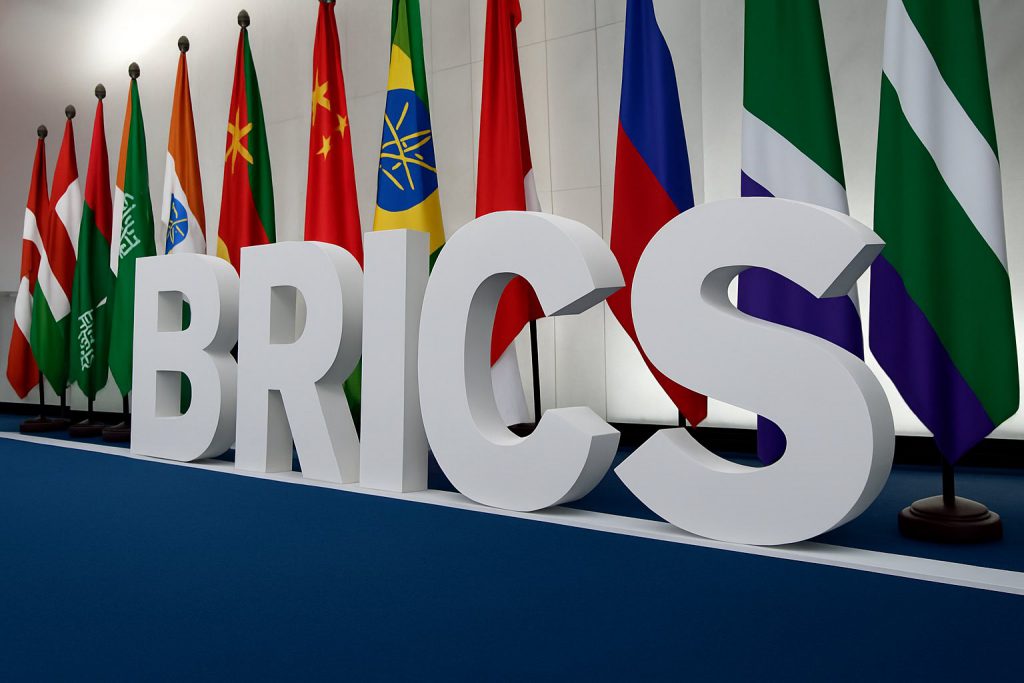BRICS trade yuan activity has surged right now as the currency reached 8.5% of global forex trades in September 2025, and this momentum is actually reshaping how Asian nations conduct business across various major economic corridors. Yuan internationalization initiatives have catalyzed 90% of intra-BRICS trade to settle in local currencies—up from just 65% two years ago, and also marking a shift in several key regional settlement patterns.
At the same time, China and ASEAN signed the upgraded ACFTA 3.0 agreement at the 47th ASEAN Summit in Kuala Lumpur, and the deal expands China-ASEAN trade cooperation into digital and green economy sectors through numerous significant policy frameworks. The BRICS trade Yuan positioning for further plays is expected to continue into 2026, along with broader shifts in regional commerce patterns that have transformed multiple essential aspects of Asian market dynamics.
Also Read: China and South Africa Banks Seal First Yuan Loan Under BRICS
BRICS Trade Yuan Growth Boosts China-ASEAN Free Trade and Digital Green Economy


ACFTA 3.0 Expands Into Digital and Green Economy Sectors
Premier Li Qiang and Malaysian Prime Minister Anwar Ibrahim signed the updated ASEAN free trade agreement, with Minister of Commerce Wang Wentao and also Minister Tengku Zafrul Abdul Aziz attending the ceremony at the time of writing. Officials began negotiations on ACFTA 3.0 in November 2022 and completed them in May 2025, and the agreement now covers nine key areas that have accelerated various major collaboration opportunities across the region. These include customs procedures, the digital and green economy, supply chain connectivity, and even support for micro-, small- and medium-sized enterprises that several key strategic initiatives are now leveraging right now.
Tengku Zafrul stated:
“So it’s in the interests of both China and ASEAN to upgrade what we have today: reduce the trade barriers, include elements of digital, include elements of sustainability, improve the various capacity-building rules, single windows and many things that make it easier for exporters and importers to do business together.”
Bilateral Trade Reaches Historic $982 Billion Milestone
The ASEAN-China free trade agreement upgrade represents a shift in regional cooperation, and these developments are reshaping trade patterns across numerous significant market segments. China has remained ASEAN’s largest trading partner for 16 consecutive years now, and ASEAN countries have served as China’s top trading partners for the past five years through multiple essential bilateral frameworks. In 2024, bilateral trade reached a volume of US$982.3 billion, which actually stands 17 times higher than the level officials recorded back in 2002 when various major economic partnerships were just emerging.
Yuan Internationalization Drives BRICS Trade Yuan Settlement Growth
During the time of writing, the momentum of yuan internationalization is still gaining steam in the Asian markets, and even the currency strategic placement has been at the forefront of several significant changes in financial framework in the region. The 8.5% of the world of forex trades reflect a milestone to the Chinese currency adoption and the future internationalization by positioning of more plays by the yuan is anticipated to go on till 2026 through various monetary initiatives.
Also Read: BRICS Currency To Gain Reserve Status? Here’s What It Takes
The improved China-ASEAN trade frameworks puts the two parts in real position to literally harness the new sectors of the exchange not just of traditional goods but digital infrastructure and sustainability initiatives are creating new avenues of cooperation that have changed some key facets of regional trade. As BRICS preferences of settling in yuan in the Asian markets change, several key institutional actors are taking advantage of the changes to maximize their strategic placement in the global financial system.





